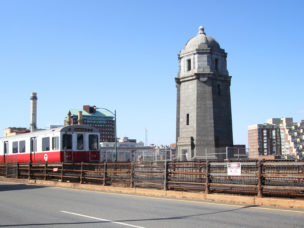Stay in the know
Subscribe to the Real Estate Blog and we’ll send you an email each time something new is posted.
Subscribe to the Real Estate Blog and we’ll send you an email each time something new is posted.
Blogs
Real Estate Blog
“Stretching” the Stretch Energy Code
The Board which promulgates the State Building Code is considering amendments to the State Energy Code which will increase the energy efficiency requirements of the Stretch Energy Code (the “Stretch Code”). It is anticipated that the Massachusetts Department of Energy Resources (“DOER”) will formally present amendments to the Stretch Code at the June 12th meeting of the Board of Building Regulations and Standards (“BBRS”). The proposed amendments will have significant implications for commercial and residential development in all 116 municipalities that have adopted the Stretch Code (for a current listing of communities that have implemented the Stretch Code – see DOER).
First adopted by the BBRS in 2009, the Stretch Code is a local option energy code that may be accepted by municipalities seeking to impose a higher level of energy efficiency than the base State Energy Code. If approved by local governing bodies, most new residential and commercial buildings and residential additions and renovations that would normally be required to meet current Building Code requirements must adhere to the more stringent energy efficiency requirements of the Stretch Code. Certain buildings, such as historic structures and so-called “specialty” commercial buildings are exempt. For a detailed description of buildings and building projects covered by the Stretch Code and a list of Frequently Asked Questions [see – BBRS]. Buildings meeting the current Stretch Code are estimated to be roughly 20% more energy efficient than buildings meeting the current base State Energy Code.
The 2009 Edition of the International Energy Conservation Code (“IECC”) constituted the base State Energy Code at the time of the adoption of the Stretch Code. The Green Communities Act, Chapter 169 of the Acts of 2008, requires that the base State Energy Code be updated within one year of any revision to the IECC. Accordingly, the 2012 Edition of the IECC will become the base State Energy Code in 2013.
The current version of the Stretch Code is roughly equivalent to the 2012 Edition of the IECC. Apparently State regulators are proposing to modify the Stretch Code so that cities and towns will continue to be able to implement enhanced energy efficiency requirements in their communities once the 2012 IECC becomes effective. The amendments to be presented by DOER on June 12th are expected to represent a 15% increase in energy efficiency requirements over the current Stretch Code.
A number of real estate industry organizations, including the Home Builders Association of Massachusetts and NAIOP, opposed the initial adoption of the Stretch Code due to concerns over the additional construction costs the Stretch Code would impose and also that by making any portion of the State Building Code optional at the local level, the BBRS would be undermining the uniformity of the Code. Many of these same groups have voiced similar concerns about the pending amendments to the Stretch Code. These organizations have also expressed the view that many communities which adopted the Stretch Code considered it a “bridge” to the 2012 IECC and that these communities were not aware that their local energy code would be continually and automatically “stretched” without any further action by the community.
Please check back for updates on the status of the pending amendments from time to time.




